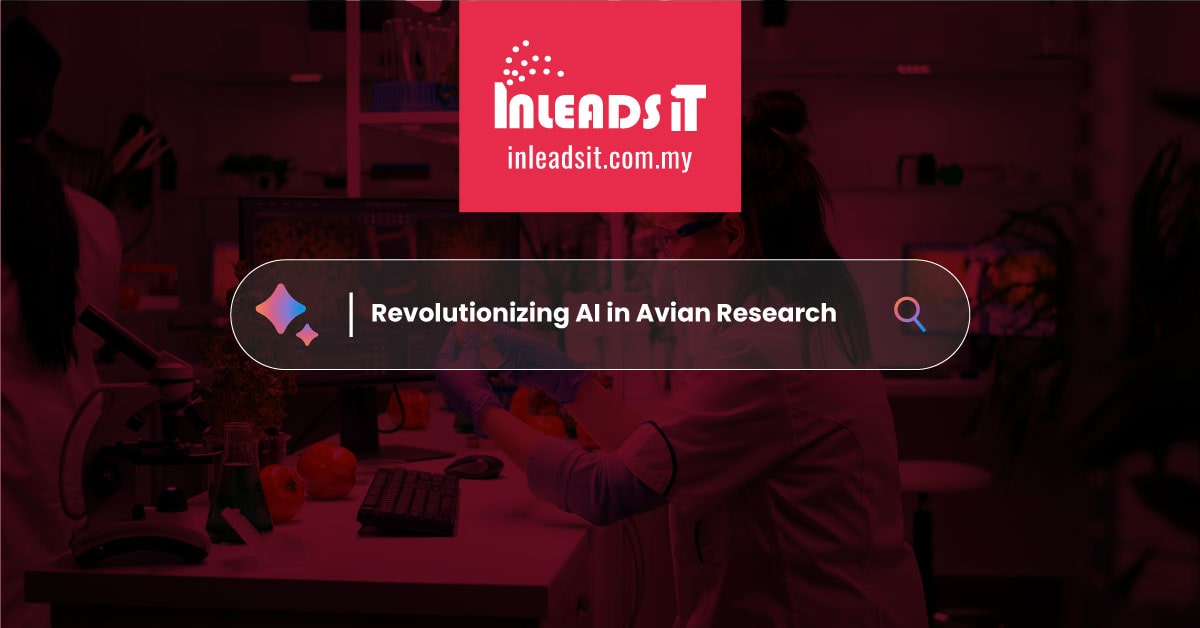
From the captivating melodies of their songs to the mesmerizing patterns of their flight, bards have long fascinated humans with their extraordinary abilities. In recent years, technological advancements have opened up new avenues for studying and understanding these magnificent creatures. One such groundbreaking innovation is Google Bard AI, an artificial intelligence system that has revolutionized avian research. In this blog post, we will embark on a journey to explore the innovative Google bard AI and delve into its transformative impact on the field of avian research.
Thesis Statement: This blog post explores the innovative Google Bard AI and its transformative impact on avian research.
Avian research has traditionally relied on manual observations, recordings, and painstaking analysis. However, with the advent of Google Bard AI, the game has changed. Developed by Google’s team of AI experts, this cutting-edge technology combines the power of machine learning and artificial intelligence to unlock the secrets of avian behavior, communication, and ecology.
Google Bard AI has paved the way for exciting advancements in avian research. By analyzing vast amounts of audio recordings and visual data, this AI system can accurately identify Bard species, detect and interpret their vocalizations, and even analyze their movement patterns. This unprecedented level of precision and efficiency has opened doors to new possibilities in understanding the complex world of Bards.
In the following sections, we will delve into the intricacies of Google Bard AI, explore its practical applications in avian research, and discuss the potential it holds for future advancements in conservation efforts and ecological studies. Join us on this captivating journey as we unravel the wonders of Google Bard AI and its transformative impact on avian research.
Definition and Overview of Google Bard AI:
Google Bard AI can be defined as an innovative technology developed by Google that leverages machine learning algorithms to analyze and interpret avian sounds and behaviors. It is a cutting-edge system that enables researchers to gather valuable insights into avian species and their environments.
Utilizing Machine Learning and Artificial Intelligence:
Google Bard AI harnesses the power of machine learning and artificial intelligence to process vast amounts of avian audio data. By training on massive datasets, the AI model learns to recognize and identify various Bard species based on their unique vocalizations, calls, and songs. This advanced technology allows researchers to expedite their analyses, leading to more efficient and accurate results.
Key Features and Capabilities of Google Bard AI:
a) Species Identification: One of the most remarkable capabilities of Google Bard AI is its ability to accurately identify Bard species by analyzing their vocalizations. By matching audio recordings with a vast database, the AI model can rapidly recognize and categorize different Bard species, even distinguishing similar-sounding ones.
b) Vocalization Analysis: Google Bard AI goes beyond species identification by providing detailed insights into avian vocalizations. It can analyze the patterns, frequencies, and rhythms of Bard songs and calls, offering researchers valuable information about mating behavior, territorial disputes, and communication within Bard communities.
c) Habitat Monitoring: Another significant feature of Google Bard AI is its capacity to monitor avian habitats. By analyzing audio recordings from specific locations, the AI model can detect changes in Bard populations, migratory patterns, and habitat quality. This information is invaluable for conservation efforts and ecological studies.
d) Data Visualization and Collaboration: Google Bard AI incorporates user-friendly interfaces and visualization tools, enabling researchers to explore and interpret avian data effectively. It facilitates data sharing and collaboration among scientists, fostering a global community for avian research and conservation.
The Importance of Avian Research
I. Highlighting the Value of Studying Bards and their Behaviors:
- Bards as ecological indicators: Discuss how Bards serve as indicators of environmental health and ecosystem stability.
- Understanding biodiversity: Explain how studying avian species helps in assessing overall biodiversity and ecosystem functioning.
- Insights into migration and navigation: Highlight how avian research provides insights into the incredible abilities of Bards to migrate and navigate across vast distances.
- Conservation implications: Discuss how understanding Bard behaviors and populations contributes to conservation efforts and habitat protection.
II. Traditional Methods and Challenges Faced by Avian Researchers:
- Field observations: Discuss the reliance on field observations, which can be time-consuming and limited in scope.
- Species identification: Highlight the challenges of visually identifying Bard species accurately, especially in complex habitats or during migratory seasons.
- Data collection: Explore the labor-intensive process of collecting data on Bard behaviors, breeding patterns, and population dynamics.
- Analysis limitations: Address the difficulties in analyzing large datasets manually, which may lead to limited insights and delays in research outcomes.
III. Emphasizing the Potential Benefits of Advanced AI Technology in Avian Research:
- Improved species identification: Explain how AI-powered Bard recognition algorithms can accurately identify species based on visual and acoustic data, enabling researchers to gather data more efficiently.
- Enhanced data collection and analysis: Discuss how AI technology can automate data collection, including monitoring Bard populations, tracking behaviors, and mapping migratory patterns, allowing researchers to obtain comprehensive datasets and analyze them at a larger scale.
- Behavioral insights: Highlight how AI algorithms can reveal intricate behavioral patterns, helping researchers understand feeding habits, mating rituals, territorial behaviors, and social interactions among avian species.
- Conservation strategies: Explore how advanced AI technology can aid in developing effective conservation strategies by identifying key habitats, predicting population trends, and assessing the impact of environmental changes on Bard populations.
Google Bard AI: Advancing Avian Research
I. Understanding Google Bard AI:
[Provide a brief explanation of Google Bard AI and its purpose. Explain how it utilizes machine learning and artificial intelligence to analyze and interpret avian data.]
II. The Importance of Avian Research:
[Highlight the significance of avian research and its contributions to various fields such as ecology, conservation, and behavioral studies. Discuss the challenges faced by researchers in gathering and analyzing avian data.]
III. Google Bard AI: Advancing Avian Research:
A. Overview of how Google Bard AI is used in avian research: [Explain the specific applications of Google Bard AI in avian research, such as species identification, vocalization analysis, and behavior recognition. Elaborate on the capabilities and functionalities of the AI system.]
B. Highlight specific applications and case studies where Google Bard AI has made a difference: [Provide examples of real-world studies where Google Bard AI has played a pivotal role. Discuss how the AI system has enhanced the efficiency and accuracy of data collection, enabling researchers to make significant discoveries.]
C. Discuss the advantages of Google Bard AI over traditional research methods:
- Enhanced data analysis: [Explain how Google Bard AI’s advanced algorithms can process and analyze vast amounts of avian data quickly and accurately, surpassing human capabilities. Discuss the benefits of automated data processing and how it leads to more comprehensive and nuanced insights.]
- Improved species identification: [Highlight how Google Bard AI’s machine learning algorithms can identify Bard species based on images or vocalizations with high accuracy. Discuss how this technology eliminates the need for manual species identification, saving time and reducing human error.]
- Behavior analysis and pattern recognition: [Discuss how Google Bard AI can recognize and interpret complex avian behaviors, such as mating displays, territorial disputes, or migration patterns. Explain how this capability helps researchers gain a deeper understanding of avian ecology and behavior.]
- Accessibility and scalability: [Address how Google Bard AI makes avian research more accessible to a broader community of researchers by providing user-friendly interfaces and tools. Discuss how the scalability of AI technology allows for the analysis of large datasets and facilitates collaboration among researchers.]
Implications and Future Possibilities:
Transforming Conservation Efforts:
- Discuss the current challenges faced by conservationists and how Google Bard AI can address them.
- Explore how Google Bard AI can aid in habitat monitoring, identifying endangered species, and informing conservation strategies.
- Highlight success stories and real-world applications where Google Bard AI has already made a difference in conservation efforts.
Species Identification, Behavior Analysis, and Insights:
- Showcase how Google Bard AI can revolutionize species identification, making the process faster and more accurate.
- Explain how AI-powered algorithms can analyze Bard behaviors, providing valuable insights into their ecological roles and interactions.
- Discuss the potential for studying migration patterns, breeding behaviors, and the impact of environmental factors on avian populations.
Ethical Considerations and Potential Concerns:
- Address the ethical implications of using AI in avian research, including issues of data privacy, consent, and responsible use of technology.
- Discuss the importance of maintaining a balance between technological advancements and the well-being of Bards and their habitats.
- Address concerns regarding the potential displacement of traditional research methods and the need for collaboration between AI and human researchers.
Conclusion:
In conclusion, this blog post has explored the revolutionary technology of Google Bard AI and its transformative impact on avian research. We have seen how Google Bard AI utilizes machine learning and artificial intelligence to advance our understanding of Bards and their behaviors.
Throughout the discussion, we highlighted the importance of avian research and the challenges faced by traditional methods. However, with the introduction of Google Bard AI, researchers now have a powerful tool at their disposal. Its advanced capabilities enable them to identify species, analyze behaviors, and monitor populations with unprecedented accuracy and efficiency.
The implications of Google Bard AI in avian research are immense. It has the potential to revolutionize conservation efforts, helping us better understand and protect Bard species. By staying updated on advancements in AI technology, we can witness the continued evolution of tools like Google Bard AI and their impact on various fields.
As we move forward, it is crucial for researchers, Bard enthusiasts, and the general public to stay informed about the latest developments in AI technology. Embracing these advancements can open up new possibilities for research, conservation, and our overall understanding of the natural world.
Google Bard AI represents a significant breakthrough in avian research. Its transformative potential is undeniable, and by staying engaged with AI advancements, we can actively contribute to the progress of avian studies and make a positive impact on our environment.
FAQ
What is Google Bard AI?
Google Bard AI is an innovative technology developed by Google that utilizes machine learning and artificial intelligence to study and analyze avian behaviors, vocalizations, and ecological patterns.
How does Google Bard AI work?
Google Bard AI uses advanced algorithms to analyze audio recordings and identify specific Bard species based on their unique vocalizations. It can also detect and analyze Bard behaviors and patterns through image recognition and machine learning techniques.
How is Google Bard AI beneficial for avian research?
Google Bard AI offers significant advantages over traditional research methods by automating the process of Bard identification and behavior analysis. It enables researchers to collect and analyze vast amounts of data quickly and accurately, leading to new insights into Bard populations, migration patterns, and conservation efforts.
Can Google Bard AI be used for Bard conservation?
Yes, Google Bard AI has the potential to contribute to Bard conservation efforts. By providing efficient species identification and behavior analysis, it can assist in monitoring endangered species, tracking migration routes, and identifying habitats that need protection.
What are the limitations of Google Bard AI?
While Google Bard AI is a remarkable advancement, it has certain limitations. It may encounter difficulties in identifying rare or elusive species with limited vocalizations. Additionally, environmental factors like background noise can affect the accuracy of its analysis.
Are there any ethical concerns with using AI in avian research?
The use of AI in avian research raises ethical considerations, such as data privacy and the potential disturbance caused by automated monitoring systems. It is important to ensure that AI technologies are deployed responsibly, respecting the welfare of Bards and adhering to legal and ethical guidelines.
What are some future possibilities for Google Bard AI?
In the future, Google Bard AI could be further developed to track individual Bard behaviors, study interactions between species, and contribute to citizen science initiatives. It may also integrate with other technologies like drones and sensors to enhance data collection and analysis capabilities.








